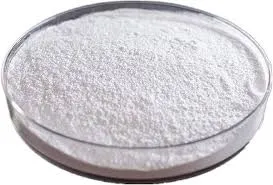
gru . 12, 2024 20:25 Back to list
Exploring HPMC-based Formulations for Enhanced Pharmaceutical Applications and Benefits
Understanding HPMC Formulation A Comprehensive Overview
Hydroxypropyl methylcellulose (HPMC) has garnered significant attention in various fields, particularly in pharmaceutical, food, and construction industries, due to its unique properties and versatile applications. The formulation of HPMC-based products involves a meticulous process that combines various ingredients to achieve desired characteristics for specific applications. This article explores the key aspects of HPMC formulation, its benefits, and its diverse applications.
What is HPMC?
HPMC is a semi-synthetic polymer derived from cellulose, a natural polymer found in plant cell walls. Its chemical structure involves hydroxypropyl and methoxy groups, which replace some of the hydroxyl groups on cellulose. This modification endows HPMC with unique properties, such as enhanced solubility, stability, and biocompatibility. HPMC is available in various grades, differing in the degree of hydroxypropyl and methoxy substitution, which influences its solubility and thickening capabilities.
Formulation Process
Formulating products with HPMC involves several steps, each crucial for ensuring stability, efficacy, and compliance with regulatory standards. The formulation process typically encompasses the following stages
1. Selection of HPMC Grade Depending on the intended application, the appropriate grade of HPMC must be selected. For instance, higher viscosity grades are suitable for thickening applications, while lower viscosity grades can be used for controlled release formulations.
2. Compatibility Assessment It is essential to assess the compatibility of HPMC with other excipients and active pharmaceutical ingredients (APIs). This evaluation helps in preventing potential interactions that could compromise product stability and performance.
3. Mixing and Homogenization Once the appropriate grade is chosen, HPMC is mixed with other components in the formulation. Homogenization techniques—such as stirring, blending, or using high-shear mixers—ensure a uniform distribution of HPMC throughout the mixture, which is critical for consistent product performance.
4. Hydration HPMC requires proper hydration to activate its thickening properties. This is typically achieved by adding water or suitable solvents during the mixing process. Achieving the correct hydration level is vital, as insufficient hydration can lead to undesirable viscosity and texture.
hpmc formulation

5. Adjustment of pH Many applications require specific pH conditions for optimal efficacy. Therefore, the pH of the formulation must be adjusted to meet the desired specifications. This may involve the addition of buffer solutions or acids/bases, depending on the formulation requirements.
6. Quality Control Tests Finally, the formulated product undergoes rigorous quality control testing to ensure it meets predefined standards for consistency, potency, and stability. Analytical techniques such as HPLC (High-Performance Liquid Chromatography), rheology measurements, and particle size analysis may be employed to evaluate the product’s attributes.
Applications of HPMC Formulation
The versatility of HPMC makes it suitable for a wide range of applications
1. Pharmaceuticals HPMC is widely used in drug formulations, particularly for controlled-release dosage forms. Its ability to form gels at specific pH levels allows for a sustained release of medications, which can enhance therapeutic efficacy.
2. Food Industry In the food sector, HPMC serves as a food additive, providing thickening, emulsifying, and stabilizing properties. It is often found in sauces, ice creams, and gluten-free products to enhance texture and mouthfeel.
3. Cosmetics HPMC is employed in cosmetic formulations for its thickening and film-forming properties. It enhances the texture of creams and lotions, improves product stability, and contributes to a pleasant feel on the skin.
4. Construction In the construction industry, HPMC is utilized as a water-retaining agent in mortars and tile adhesives. It improves workability, adhesion, and consistency in construction materials.
Conclusion
HPMC formulation represents a sophisticated process that is critical for the development of various products across multiple industries. Its unique properties and adaptability make it an essential ingredient in modern formulations, enhancing the efficacy, stability, and performance of numerous applications. As research continues to uncover new uses for HPMC, its significance in product development is poised to grow, making it a valuable asset in innovation and technology.
-
Versatile Hpmc Uses in Different Industries
NewsJun.19,2025
-
Redispersible Powder's Role in Enhancing Durability of Construction Products
NewsJun.19,2025
-
Hydroxyethyl Cellulose Applications Driving Green Industrial Processes
NewsJun.19,2025
-
Exploring Different Redispersible Polymer Powder
NewsJun.19,2025
-
Choosing the Right Mortar Bonding Agent
NewsJun.19,2025
-
Applications and Significance of China Hpmc in Modern Industries
NewsJun.19,2025







